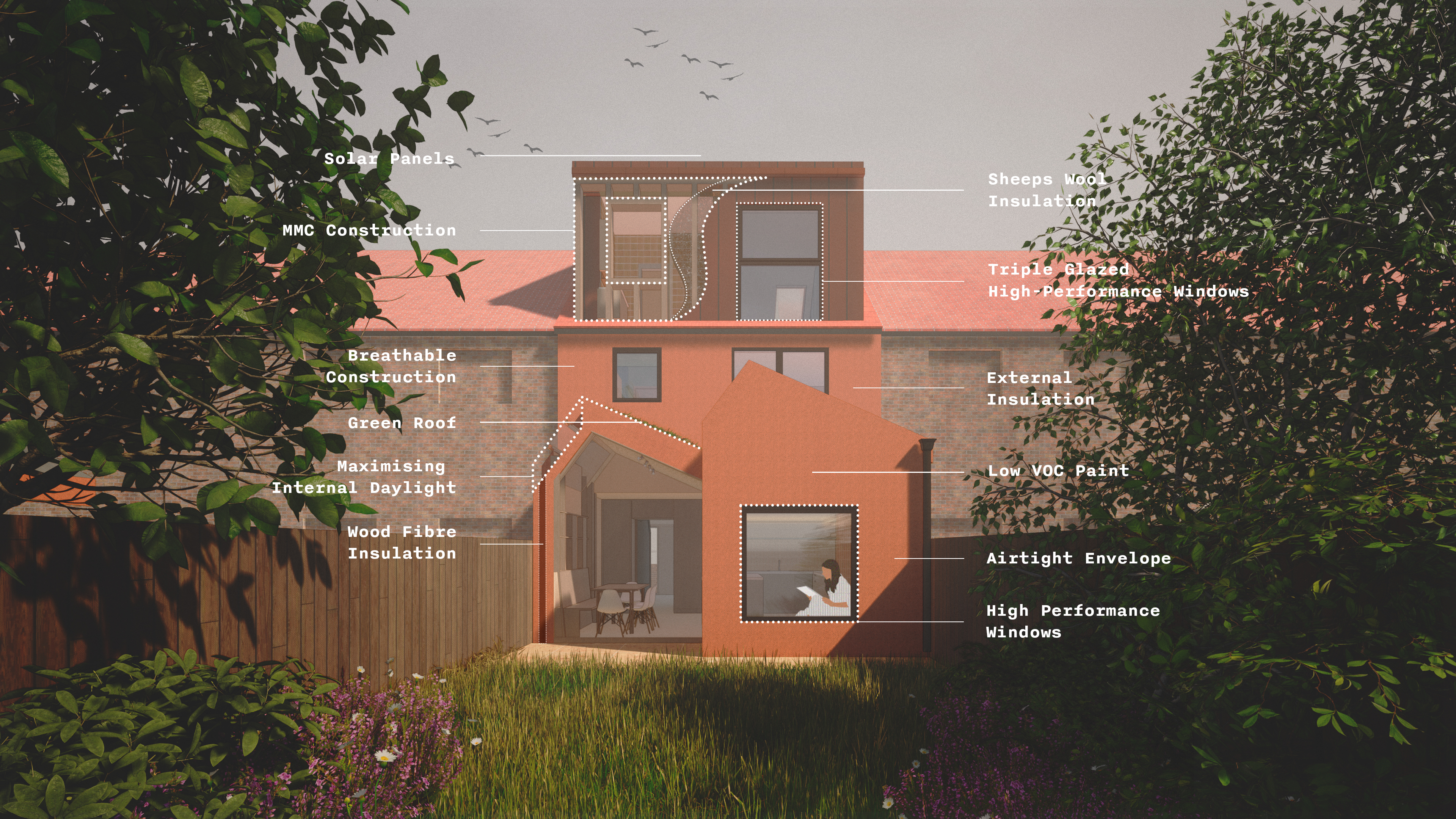Retrofit vs Refurbishment
< Back to InsightsA home renovation project is a great opportunity to improve the energy efficiency of your home, reducing your energy bills alongside your impact on the environment.
What is the difference between retrofit vs refurbishment?
To compare a retrofit vs refurbishment approach, a retrofit will improve the energy efficiency and comfort of a building, as well as to make it more attractive and functional. This can be achieved by, for example, improving the insulation of walls, floors and roof, improving the airtightness, installing high performance windows and doors, and renewing heating and cooling systems, often including renewable energy sources.
Refurbishment is a more general term that refers to any modernisation of a building. This can include updating the décor, replacing lighting, appliances, and repairing structural damage. Refurbishment can make a building more appealing and help it function better. But as it doesn’t address the fabric of the building, it often won’t have an impact on its energy efficiency or the overall sustainability.
Generally on our domestic projects we try to retrofit wherever we can and refurbish where that’s not possible.
If a client is committed to the process, we encourage a deep energy retrofit. This involves a more systematic approach, and several upgrades at the same time including insulation, moving to electric only power, installing an Air Source Heat Pump or adding a source of renewable energy. This process will involve more detailed energy modelling to ensure measures taken complement each others and typically aims to reduce the energy used by the home by more than 50%.
Retrofit for the future
Retrofitting existing buildings will play a hugely important role in achieving our climate targets. 80% of the buildings that will exist in 2050 have already been built, and the construction of new buildings in the UK currently makes up 25% of the country’s carbon emissions. Giving old buildings new life, and improving their performance avoids building new ones from scratch. This saves carbon, and saves the remaining carbon budget for more important things like healthcare and education. Historic homes are often uninsulated and draughty and therefore very expensive to heat. As well as making a home more comfortable, a sustainable retrofit will achieve low operational energy costs over time, and we can help our clients compare the up-front investment with the future benefit.
It’s now critical that we make the country’s homes more energy efficient to create warm, healthy, affordable homes and ideally meet the government’s net zero target sooner than 2050. It’s only by meeting and exceeding these targets that we can stabilise the rising temperatures, extreme heatwaves, droughts and flooding seen around the world in recent years. One organisation committed to scaling this approach in the UK is the National Retrofit Hub who are bringing together many involved in the retrofit sector to share expertise and enable a National Retrofit Strategy.
You can learn more about how we apply retrofit strategies practically, in one of our recent projects, Mid Terraced Dream. Or get in touch to talk to us about retrofit vs refurbishment in your own dream home.

Let’s have a chat about your vision and
how we can help you realise it.
Collective Works are an architecture & design studio. Our network of professionals will create your perfect solution.
